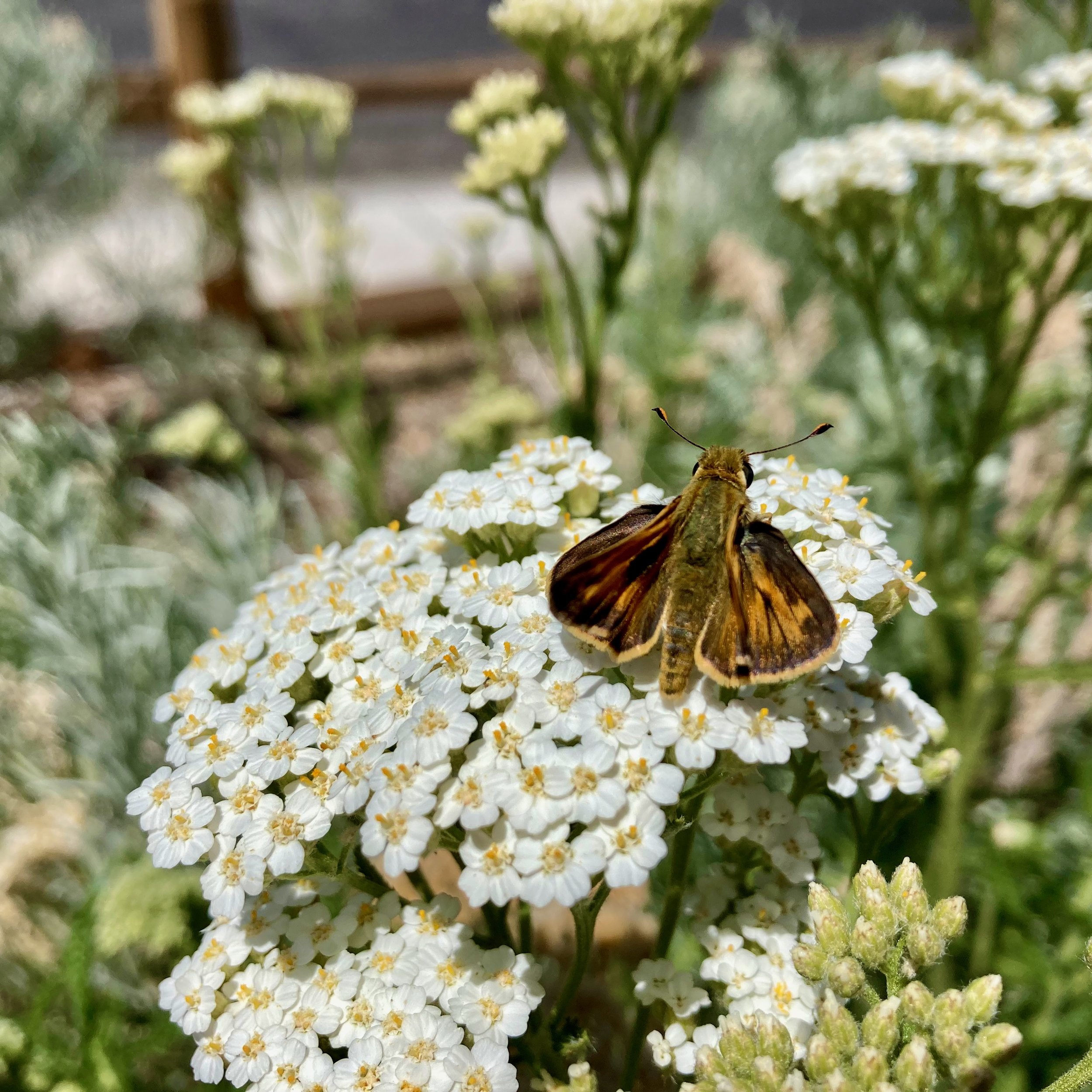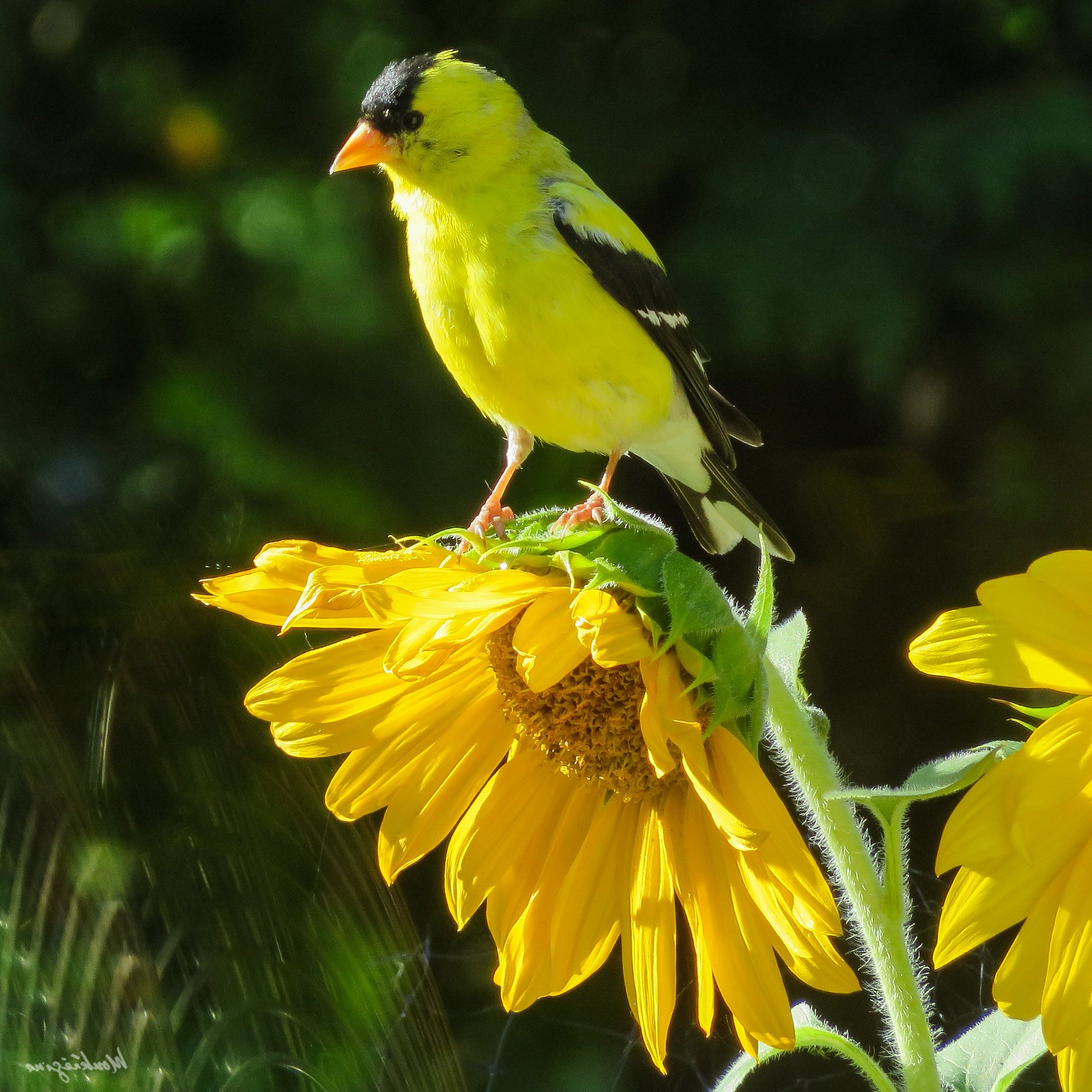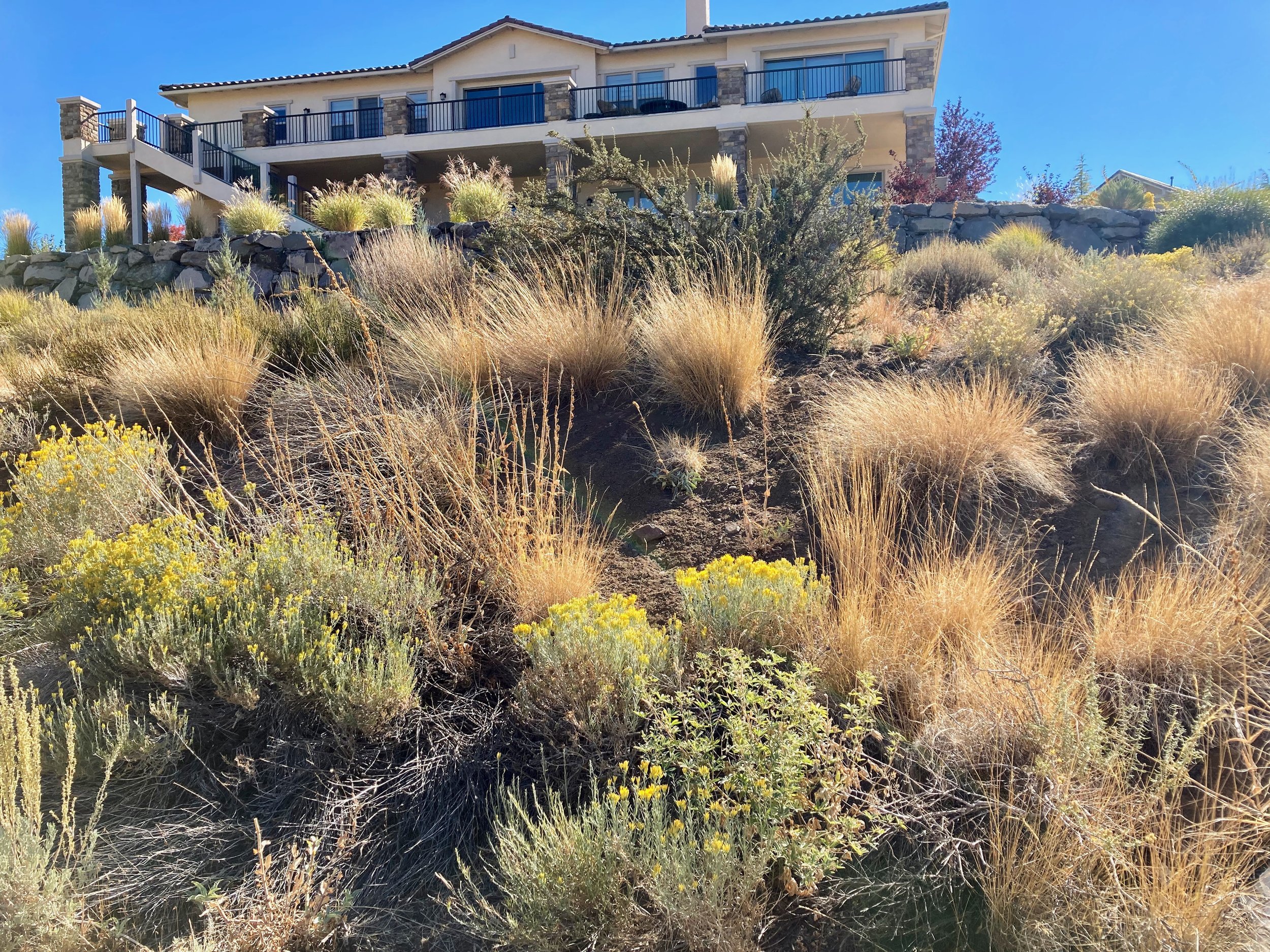NATIVES MATTER
How native plantings support local ecosystems and why you should consider them for your yard
“ . . .Without [native plants] and the insects that co-evolved with them, local birds cannot survive”
Photos (left to right): penstemon and bumble bee (Carrie Jensen), yarrow and skipper butterfly (Carrie Jensen), and annual sunflower and American goldfinch (Monteregina, Flickr)
Nonnative plants take up space and resources that would otherwise go to native plants, breaking down local ecological connections and food webs. Native birds depend on insects to feed their babies, and many native insects cannot sustain life from nonnative plants they haven’t evolved to eat. Because nonnative plants don’t do as good a job feeding native insects, this leads to less food for baby birds and biodiversity loss in urban and suburban areas.
Just this fact alone illuminates why planting natives in our River-Friendly Yards is so important. And if this isn’t reason enough to choose native plants, there are lots of other reasons to consider.
Other benefits to planting natives in your yard include:
Conserves water: In the high desert, every drop of water is precious. Since we use over 50% of our water on our landscapes, this is a key place to conserve. Many native plants are very drought resilient and require significantly less water than conventional landscaping plants, so incorporating native plants into your yard can go a long way toward conserving water and saving money on your water bill.
Low maintenance: As they are suited to our local region and microclimates, native plants also need less care and typically don’t love fertilizers. This equals less time spent on yard maintenance and more money in your pocket. (Audubon Society)
Beauty: Many native plants offer beautiful showy flowers, produce abundant colorful fruits and seeds, and brilliant seasonal changes in colors from the pale, thin greens of early spring, to the vibrant yellows and reds of autumn. (Audubon Society), have red stems that create beauty and contrast in the winter.
Protect water quality: Because native plants are adapted to our local soils and co-evolved with local insects, they generally don’t require as much fertilizers to grow or pesticides to combat insects. Using less of these chemicals in our yards reduces the risk that they can wash off our landscapes and into the storm drains that flow into our local waterways and the Truckee River
Support Wildlife: In addition to providing vital habitat for birds, many other species of wildlife benefit as well. The colorful array of butterflies and moths, including the iconic monarch, the swallowtails, tortoiseshells, and beautiful blues, are all dependent on very specific native plant species. Native plants provide nectar for pollinators including hummingbirds, native bees, butterflies, moths, and bats. They provide protective shelter for many mammals. The native nuts, seeds, and fruits produced by these plants offer essential foods for all forms of wildlife. (Audobon Society)
Photo Credit: Lori Jensen Caption: A monarch caterpillar feeds on native milkweeds in a garden in the Truckee Meadows.
Cost savings at the nursery: Natives can cost less than your nonnative alternatives. Because they are usually propagated locally, there may be less transportation costs added to the price. Plus, you often buy natives in small containers or as seed packets, which are less costly than larger container plants.
Erosion Control: The sandy, quick-draining soils present throughout most of Nevada are prone to erosion due to high winds, fire, and flash floods. The root systems of native plants can help to control erosion, making them an appealing landscaping choice for homeowners concerned with erosion. (UNR Extension)
Photo Credit: Carrie Jensen Caption: Native bunchgrasses and perennials provide erosion control on a newly developed site with steep slopes in Northwest Reno.
Climate resiliency: Many native plants, especially native bunch-grasses with extensive root systems, are effective at storing the greenhouse gas carbon dioxide. And unlike trees, grasses store carbon underground in their roots, which may be very beneficial carbon sinks in the arid Western United States where increased wildfires are turning forests into carbon sources instead of sinks (Audobon Society and UC Davis)
Resources and Further Reading
The National Audubon Society, Why Native Plants Matter
The National Audubon Society, Native Plants for Birds
Wildflower Ethics and Native Plants (US Forest Service)
Designing Landscapes for Northern Nevada's Arid Climate (UNR Cooperative Extension)
Migratory Birds Like Native Berries Best (Audubon.org)






